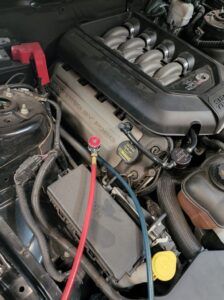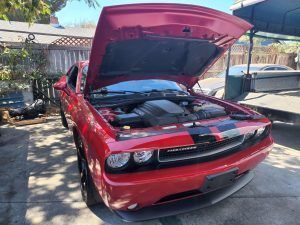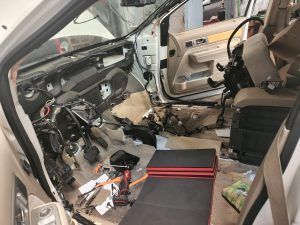The History and Evolution of Automotive Air Conditioning Systems
Automotive air conditioning (A/C) systems have become a standard feature in modern vehicles, providing comfort and climate control for passengers in a wide range of environments. However, this technology was not always commonplace. The development of automotive air conditioning has been a fascinating journey involving numerous innovations in engineering, chemistry, and manufacturing.
This article traces the history of automotive air conditioning from its early origins to modern-day advancements, examining how this indispensable feature evolved and transformed the driving experience.
1. Early Concepts of Automotive Air Conditioning: The Pre-1930s Era
Before the invention of automotive air conditioning, drivers and passengers relied on natural airflow for cooling. Early methods of ventilation included opening windows, roof vents, or fabric sunshades. However, these methods were often ineffective, especially in extreme climates. The idea of artificially cooling the cabin of a vehicle emerged in the early 20th century, but it faced several challenges due to the limited technological resources of the time.
Early Cooling Devices
In the 1920s, various cooling devices were introduced, including rudimentary evaporative coolers. These devices, often referred to as “car coolers” or “swamp coolers,” mounted on car windows and used airflow to evaporate water, providing a basic cooling effect. However, these systems were only effective in dry climates, as they depended on the principle of evaporative cooling.
While these early attempts were crude and lacked widespread adoption, they laid the groundwork for future innovations in automotive climate control.
2. The First True Automotive Air Conditioning System: The 1930s
The 1930s marked a turning point in automotive air conditioning with the introduction of the first factory-installed A/C system. This era saw significant advancements in refrigeration technology, making it possible to apply cooling systems to automobiles.
Packard’s Pioneering Effort (1939)
In 1939, Packard Motor Company
became the first automaker to offer air conditioning as a factory-installed option in its luxury vehicles. Packard partnered with the Bishop and Babcock Company
of Cleveland, Ohio, to design and implement this groundbreaking system. The A/C unit was large and cumbersome, occupying much of the vehicle’s trunk space. It used a mechanical compressor driven by the engine, a condenser, and an evaporator to cool the cabin.
While Packard’s air conditioning system was a significant technological achievement, it had several limitations:
- No Temperature Control:
The system lacked the ability to regulate temperature, making it either fully on or off.
- No Dashboard Controls:
Passengers could not control the A/C from inside the cabin; instead, it had to be operated manually from the trunk.
- High Cost:
The system was expensive, limiting its appeal to affluent customers.
Despite these challenges, Packard’s introduction of automotive air conditioning paved the way for future innovations in the industry.
3. Post-War Advancements: The 1940s and 1950s
Following World War II, the automotive industry experienced a period of rapid growth and technological innovation. Air conditioning systems became more refined and practical, although they were still considered a luxury feature reserved for high-end vehicles.
Nash Motors and the Integrated Air Conditioning System (1954)
In 1954, Nash Motors
introduced a major advancement in automotive air conditioning by offering the first fully integrated A/C system. Unlike previous systems that required separate components mounted in the trunk, Nash’s system was built directly into the vehicle’s dashboard, significantly reducing space requirements and improving convenience.
Nash’s system was marketed as the “All-Weather Eye”
, emphasizing its ability to provide year-round climate control, including heating and cooling. This innovation set the stage for future automotive air conditioning systems and made the technology more accessible to a broader range of consumers.
Other Key Developments in the 1950s
- Chrysler’s Airtemp System (1953):
Chrysler introduced its Airtemp
system, which featured a more compact and efficient design. Airtemp utilized a rear-mounted evaporator and blower, offering better cooling distribution throughout the cabin.
- General Motors (GM):
GM began offering air conditioning options in its Cadillac, Buick, and Oldsmobile models, solidifying the technology’s presence in the luxury car market.
By the late 1950s, automotive air conditioning was gaining traction, but it remained a premium feature due to its high cost and complex installation process.
4. The Expansion of Air Conditioning: The 1960s and 1970s
The 1960s and 1970s saw a significant rise in the adoption of air conditioning across a broader range of vehicle segments. Advances in manufacturing processes, refrigeration technology, and consumer demand helped drive down costs, making A/C systems more affordable and commonplace.
Key Innovations and Trends in the 1960s
- Introduction of Refrigerant R-12 (Freon):
During the 1960s, R-12
, commonly known as Freon
, became the standard refrigerant used in automotive air conditioning systems. Developed by DuPont
, R-12 was highly efficient and non-flammable, making it ideal for vehicle cooling applications.
- Improved Control Systems:
Automakers began incorporating dashboard-mounted controls that allowed drivers to adjust temperature, fan speed, and airflow direction, enhancing the user experience.
Widespread Adoption in the 1970s
By the 1970s, air conditioning was no longer limited to luxury vehicles. Compact and mid-size cars, such as the Ford Mustang and Chevrolet Malibu, began offering air conditioning as a factory option or standard feature. This decade marked a shift in consumer expectations, with air conditioning becoming a desirable feature for comfort and convenience.
5. Environmental Concerns and the Shift to R-134a: The 1980s and 1990s
While air conditioning systems became more advanced and widespread, environmental concerns emerged regarding the use of R-12 refrigerant. Scientists discovered that chlorofluorocarbons (CFCs), including R-12, contributed to the depletion of the Earth’s ozone layer. This discovery prompted regulatory changes and led to the development of more environmentally friendly refrigerants.
The Montreal Protocol (1987)
In 1987, the Montreal Protocol
was established as an international treaty to phase out ozone-depleting substances, including R-12. This treaty accelerated the automotive industry’s transition to alternative refrigerants.
The Introduction of R-134a Refrigerant
In the early 1990s, R-134a, a hydrofluorocarbon (HFC) refrigerant, replaced R-12 in automotive air conditioning systems. R-134a offered several advantages:
- Ozone-Friendly:
Unlike R-12, R-134a does not contain chlorine, making it safer for the ozone layer.
- Similar Performance:
R-134a provided comparable cooling performance to R-12, ensuring a smooth transition for manufacturers and consumers.
- Widespread Compatibility:
Automakers designed new A/C systems to accommodate R-134a, and retrofitting kits were made available for older vehicles.
The transition to R-134a marked a significant milestone in the history of automotive air conditioning, reflecting the industry’s commitment to environmental responsibility.
6. Modern Automotive Air Conditioning Systems: 2000s to Present
Today’s automotive air conditioning systems are more sophisticated, efficient, and environmentally friendly than ever before. Innovations in materials, electronics, and refrigerants have enhanced the performance and sustainability of modern A/C systems.
Key Features of Modern A/C Systems
- Automatic Climate Control (ACC):
Many vehicles now feature ACC, which allows drivers to set a desired cabin temperature. The system automatically adjusts fan speed, airflow, and temperature to maintain a consistent environment.
- Multi-Zone Climate Control:
Modern vehicles often include multi-zone climate control, enabling different temperature settings for the driver, front passenger, and rear passengers.
- Hybrid and Electric Vehicle A/C Systems:
Hybrid and electric vehicles use electric compressors instead of traditional belt-driven compressors, allowing the A/C system to operate independently of the engine.
The Transition to R-1234yf Refrigerant
In response to growing concerns about global warming, the automotive industry began transitioning from R-134a to R-1234yf
, a new refrigerant with a lower global warming potential (GWP). R-1234yf offers several benefits:
- Environmentally Friendly:
R-1234yf has a GWP of 4, significantly lower than R-134a, reducing its environmental impact.
- Improved Efficiency:
R-1234yf systems are designed to be more energy-efficient, contributing to better fuel economy in conventional vehicles and longer battery life in electric vehicles.
As of the 2020s, most new vehicles are equipped with R-1234yf A/C systems, reflecting the industry’s commitment to sustainability and regulatory compliance.
7. The Future of Automotive Air Conditioning
The future of automotive air conditioning is poised for further advancements, driven by emerging technologies and environmental considerations. Key trends include:
a) Integration with Advanced Driver Assistance Systems (ADAS)
Automakers are exploring ways to integrate A/C systems with ADAS technologies to enhance passenger comfort and safety. For example, adaptive climate control could adjust cabin temperature based on external weather conditions and passenger preferences.
b) Innovations in Refrigerant Technology
Research continues to develop new refrigerants with even lower environmental impact. Future refrigerants may offer enhanced performance while minimizing ecological harm.
c) Smart Climate Control Systems
The rise of connected vehicles and the Internet of Things (IoT) will enable smart climate control systems that can be controlled remotely via smartphone apps. These systems may also learn driver preferences over time, offering personalized climate settings.
Conclusion
The evolution of automotive air conditioning from rudimentary cooling devices to sophisticated climate control systems has transformed the driving experience, making it more comfortable and convenient. Innovations in refrigerant technology, system design, and environmental responsibility have shaped the development of modern A/C systems. As the industry continues to advance, automotive air conditioning will play an integral role in enhancing vehicle performance, passenger comfort, and environmental sustainability.







